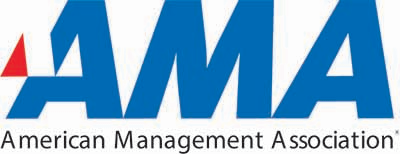ATD Blog
How to Solve the Management Puzzle
Fri Apr 09 2021

Confronted with the global changes that occurred during the past year, the federal workforce continues to be faced with uncertainty that requires flexibility and the ability to pick up the pieces of what remains and attempt to fit them back together. The question facing the public sector is if management is prepared to drive the outcomes of its mission while effectively overseeing their teams in today’s environment. We’ve seen a shift in management’s focus toward human capital and the recognition of their responsibility in driving strategic engagement.
The importance of communicating with clarity and timeliness to set expectations, coach for performance, and ensure effective relationships is a core management component now more than ever. A keen observation American Management Association (AMA) made in 2020 is the need to be thoughtful, reflective, and intentional about how people manage and lead as agencies navigate the effects of the pandemic. “There are three key questions we ask our clients: What’s the thought that they’re putting into their leadership management style? What’s the impact that it’s having on them, their team, their colleagues? And how intentional are they in their communication to their team—what they say and do and what people see in them as a leader?” says Jeff Becker, director of AMA Government Solutions.
The second core puzzle piece that we continue to see a focus on is trust and, in particular, the importance of building and enhancing it within your people. Of equal importance to trust is the empathy, credibility, and approachability that leaders provide. How approachable are you to your team, and what establishment do you have with them that they are approachable with you as well?
Another piece of the management puzzle that we continue to hear about from the government agencies we work with is around the sense of accountability and how it relates to no longer working together in an office environment. It’s important not only to establish trust but accountability. The disruption and chaos of the past year has taught us how critical it is to exercise emotional intelligence to foster a culture of accountability. “We ask our clients to reflect on how they interact with people and how their actions affect others. To listen and think about what others are saying and show them how to pick up on emotional cues, show curiosity about other people, and remain self-confident and open-minded,” says Becker.
Another piece of the puzzle is focused on how you engage and communicate with your team. First and foremost, stay informed and inform. Ask yourself what it is you are looking to find out, what do you need to know, what do your people need to know, how you’re ensuring that your people are aware of what’s happening, and the changes that are occurring and the impact of that on clients. At AMA we talk a lot about curiosity and the need to continue to stay curious and consider “ask versus tell.” Too often we get in “tell mode,” which is not a great management practice. Rather, we suggest you think about how you turn some of those tell comments into questions. People support what they help to create; if they help create an answer, which means they've been asked rather than told to do something, there’s buy-in, which leads to engagement.
The last piece of the puzzle is centered around listening. If you’re going to ask a question, be quiet and really hear the words and phrases and listen to the emotional component and meaning behind it. Telling is not an engagement strategy. If you’re going to engage, you have to ask and truly listen.
While putting the pieces together, think about these questions:
What are the key pieces of your puzzle that need your attention and focus?
How are you communicating trust, clarity, and emotional intelligence?
How would your team answer that question?
Want to learn more? Join the AMA Government Solutions on May 25-27, 2021 for the ATD Government Workforce virtual conference.

